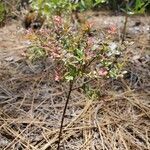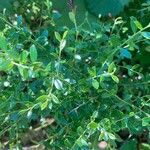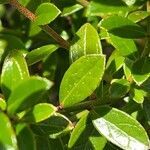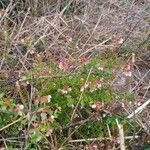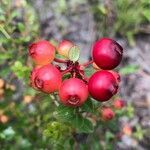A small shrub. It grows 45-90 cm high. The twigs are green and young leaves are very bright green. The leaves are small and leathery. They are 5-12 mm long by 5 mm wide. The flowers are round or urn shaped and 5-8 mm long. They are white with tinges of pink. The fruit are round shiny berries. They are 1.2 cm across and black.
